Europe drops asteroid sample-return idea
- Published
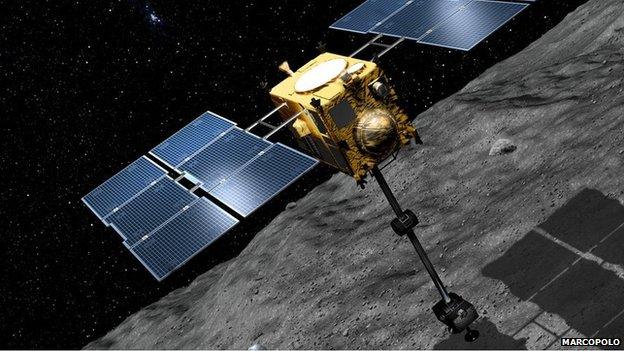
The MarcoPolo concept has gone through three iterations in the past decade
Europe will not be mounting a sample-return mission to an asteroid. Not anytime soon, certainly.
The MarcoPolo venture, which has been under discussion for a decade, has fallen out of the European Space Agency's latest competition to find a future medium-class mission, external.
It is the third time MarcoPolo has been rejected.
Planetary scientists say Europe will now have to sit on the sidelines while the US, Japan and China lead the field.
"We're desperate for Esa to participate in this huge international effort to bring back these amazing samples and explore the origins of the Solar System," said Dr Ian Franchi from the MarcoPolo consortium.
"Sample return is the future of planetary science. What you can do in an Earth lab, even with a few grams, is mind-blowing.
"Look at what we've done with Rosetta and Philae at Comet 67P. That is amazing science, but if we could bring samples back to Earth, it would be like adding several zeroes to that science," the Open University researcher told BBC News.
Technology readiness
Esa's advisory groups have just completed the preliminary filter of 27 proposals submitted to take a launch opportunity in 2025.
The opening is known as M4 - the fourth in a series of medium-class missions under Europe's "Cosmic Vision", external programme.
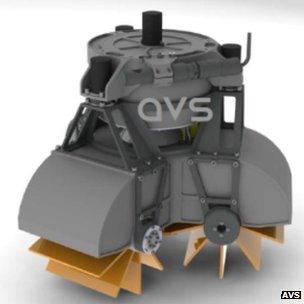
Huge effort has already gone into developing the necessary sampling technologies
By "medium class", Esa essentially means something that costs hundreds of millions of euros, rather than a billion.
MarcoPolo-2D, as the latest concept was termed, has been culled at the very first stage of the new competition. It will not now go forward for further detailed study.
The precise reasoning for the elimination is unknown. MarcoPolo's proposers have simply been told that it failed on "technical and/or programmatic" grounds.
This will come as a something of a surprise to many observers.
MarcoPolo in its various guises has had, through the years, many millions of euros spent on it, both in academia and in industry, proving the required technology.
At a certain level, it is probably the most mature concept in European space exploration never to have flown.
Cost concerns
MarcoPolo's first rejection came in the competitions to find the M1 and M2 missions, which will be launched in 2018 and 2020, respectively.
These opportunities went to Solar Orbiter, a mission to study the Sun, and to Euclid, a telescope to study dark matter and dark energy.
But MarcoPolo-R, as it was then renamed and re-submitted, then lost out in the M3 competition as well.
That launch opportunity, in 2024, was taken by Plato, a telescope to look at exoplanets.
Now, MarcoPolo-2D has gone down.
The most likely reason is cost. Esa member states accepted Euclid even though its complexity meant the price of the mission broke the advertised cost cap for M2.
This resulted in later M missions having to fight for acceptance under much tighter budget constraints. For M4, this is a cost to Esa of about 450 million euros.
'Impossible' bar
The MarcoPolo consortium knew this, and tried to slim down its offering by submitting a concept for a joint sample-return venture with the Chinese.
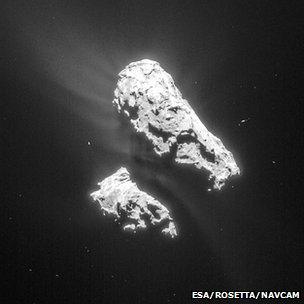
Doing sample return would be like Rosetta comet science, but "with extra zeroes"
China would provide the rocket and the carrier spacecraft; Europe would provide the lander and sample-grabbing and encapsulating technology.
But the suspicion is that the agency's reviewers were still not convinced by the cost estimates.
The MarcoPolo consortium has requested detailed feedback.
"It's very difficult to do a planetary mission that's of scientific value within the very strict cost cap of M4," said Dr Franchi.
"In that sense, Esa may have failed the community by setting a boundary that made it impossible for a planetary proposal to succeed."
Indeed, it is thought none of the planetary proposals survived the initial cull.
Other missions
Where this now leaves sample-return science in Europe is difficult to say.
To understand the big questions about the Solar System's origins, scientists say they really need to study asteroid, comet and planet samples here on Earth - not in space.
In this way, they can throw the full panoply of analytical tools at the specimens.
Japan has just launched its Hayabusa-2 mission, external to collect dust and rock from the C-type near-Earth asteroid (162173) 1999 JU3.
The Americans' Osiris-Rex mission, external will launch next year, again going to a C-type asteroid - 101955 Bennu.
China may or may not pursue an asteroid mission of its own, but it already has sample-return intentions at the Moon with its Chang'e 5 mission in 2017.
Europe, in contrast, has nothing in prospect.
Dr Franchi says there is still a compelling reason to go to a D-type asteroid. This type of object is more primitive, and a sample brought back to Earth might yield even deeper insights into the materials that built the Solar System.
"I won't say we've given up in the MarcoPolo team; we're just resting at the moment."
The Esa M4 competition is likely to produce two or three candidates by June this year for further detailed study. That next part of the selection process could last up to two years. A final choice could therefore emerge in 2017.
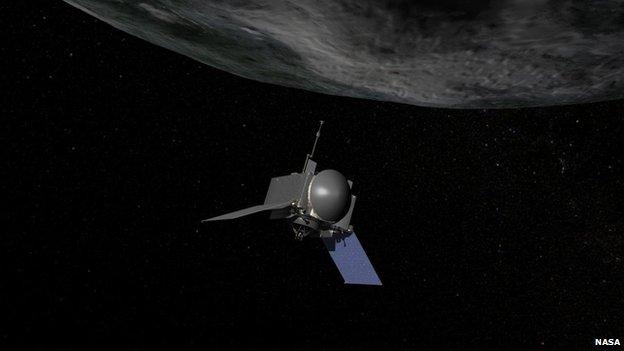
The Americans' Osiris-Rex mission to Bennu should launch next year
Jonathan.Amos-INTERNET@bbc.co.uk and follow me on Twitter: @BBCAmos, external
- Published20 February 2014
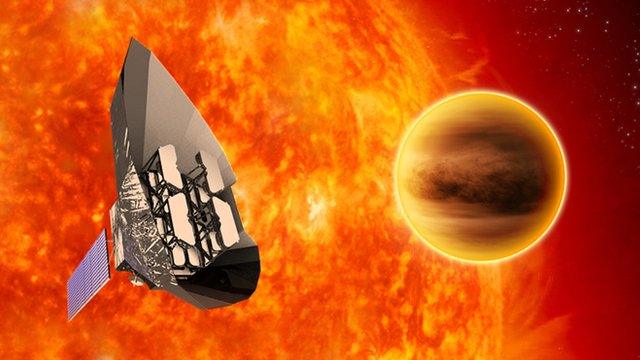
- Published26 April 2012

- Published20 June 2012